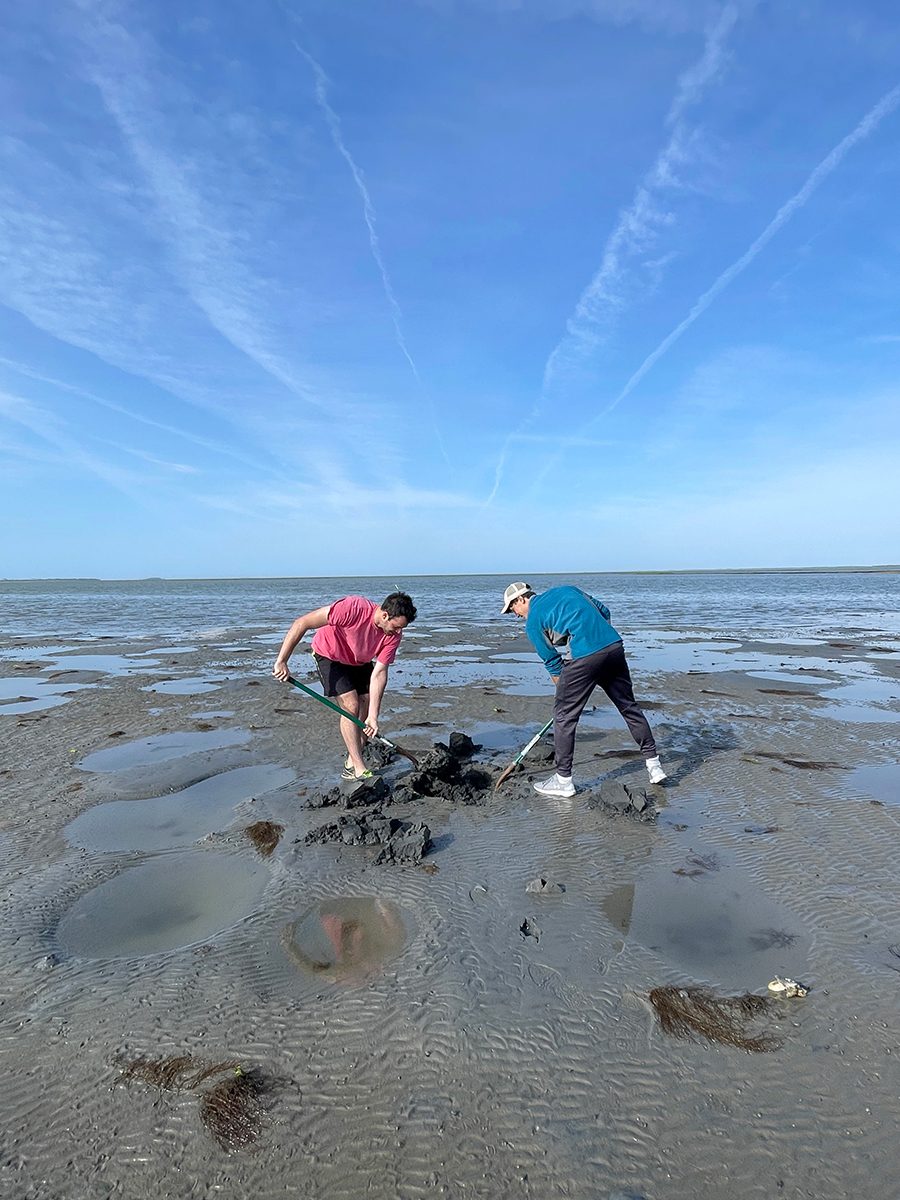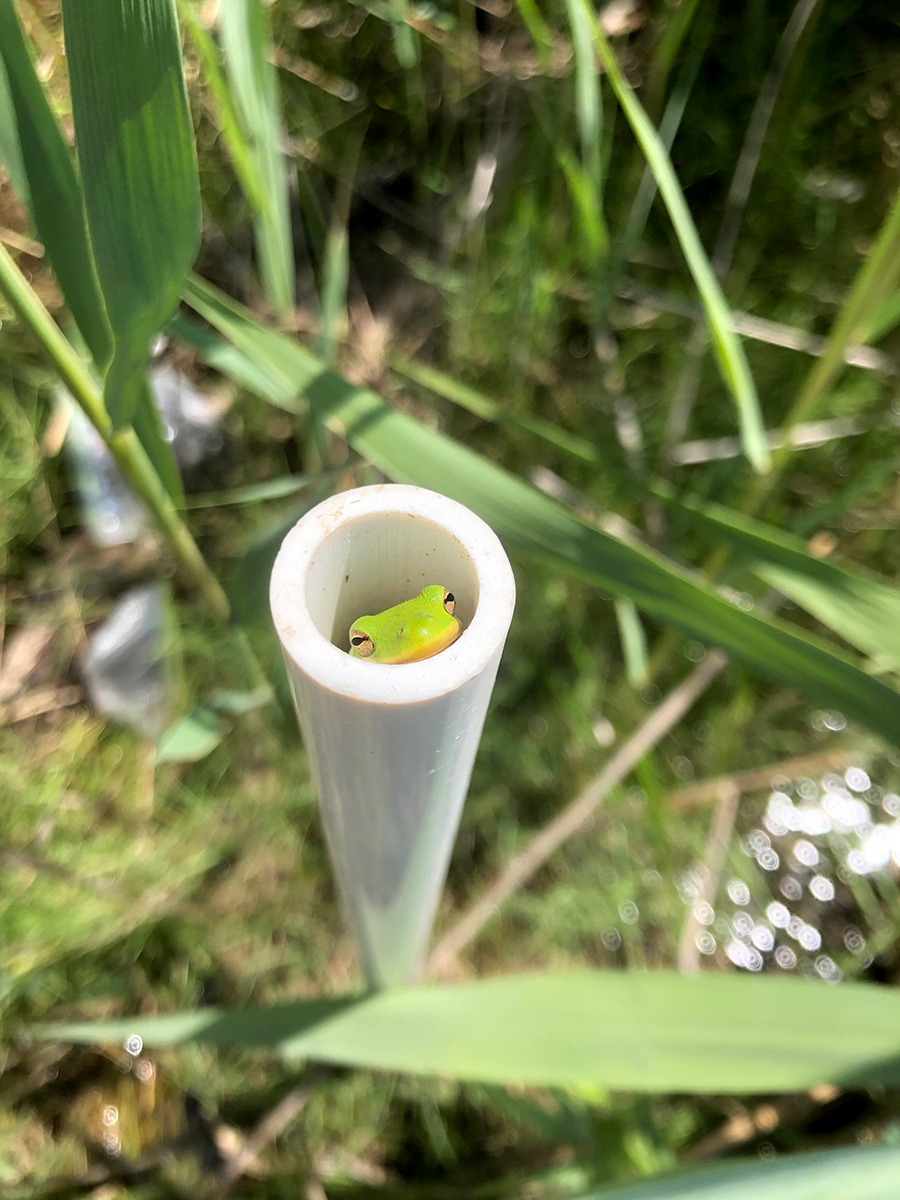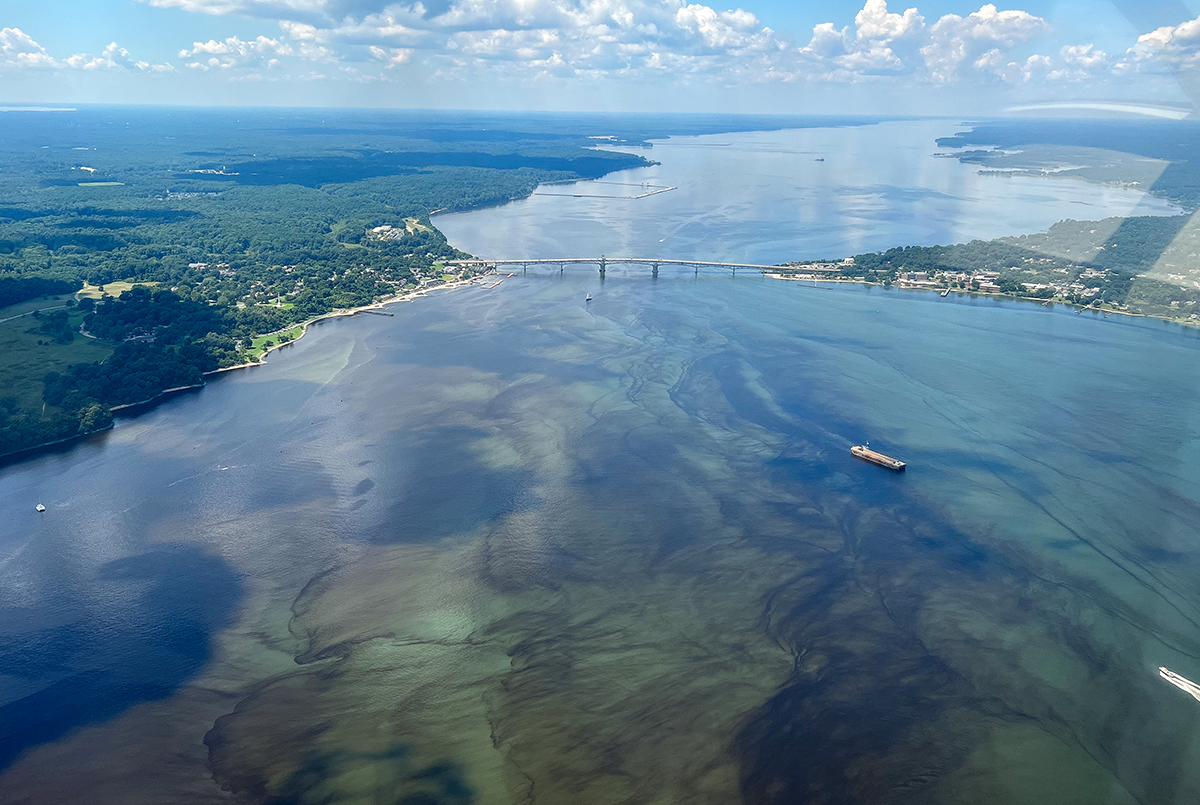VIMS announces winners of 2022 Photo Contest
The VIMS Photo Contest, now in its 23rd year, recognizes the most noteworthy images captured by VIMS faculty, staff, and students while in the field and laboratory.
This year's Grand Prize was awarded to Hollis Parks, Business Manager at VIMS' Eastern Shore Laboratory, for her captivating photo of a ghost crab leaving tracks and casting a shadow across the sands of a beach on Parramore Island. Parks captured this fantastic moment of sand and shadow while exploring the natural beauty of the island during a family fishing outing. "I found so many ghost crabs that day," says Parks, "and they all seemed to be incredibly brave and photogenic."
Category Winners
As in years past, the selection committee awarded winners in categories best representing the most common types of images submitted during previous competitions. The committee is led by VIMS Publications Manager Sue Stein.

In the People at Work category, research scientist and Coastal Hydrodynamics & Sediment Dynamics (CHSD) program director Grace Massey took the top prize for her photo of undergrad Jonathan Moore and REU intern James Lu digging for benthic invertebrates in the mudflats of Cedar Island, Virginia. The ripples in the mud and contrails in the sky draw the eye into the hard work of students looking for invertebrates in mud to be identified later at the Eastern Shore Laboratory (ESL). On this outing, Lu and Moore dug up hard clams (Mercenaria mercenaria) and plume worms (Diopatra cuprea). Each summer the Research Experiences for Undergraduates (REU) program, directed by Rochelle Seitz and coordinated by Massey, takes a field trip to the ESL. Moore joined the field trip as a visiting undergraduate student from Virginia Tech working in the CHSD lab on a collaborative project between VIMS, VA Tech, and the Dauphin Island Sea Lab.

Grace Molino, a PhD student in the Coastal Geomorphology and Ecology lab at VIMS, won the Marine Wildlife category with her photo Saltmarsh Plot Visitor. Molino and colleagues were "surprised and delighted" to discover the little green tree frog (Hyla cinerea) inside a PVC pipe they use to mark the center of their saltmarsh plot at a field site in Blackwater, Maryland. “We were all very excited to find the frog,” says Molino, “and take a few minutes out of a hard field day to enjoy one of the creatures we don’t think much about in our work. He just made us all super happy and was definitely the highlight of our day!” The frog was discovered during an annual data-gathering endeavor that involves long days in the field for a large team in order to collect an abundance of data from 100 plots and is meant to try to answer questions related to rising sea levels, such as “what is finally killing the mature trees: salinity, inundation, or removal of the canopy by storms?” and “why does this area have lots of Phragmites, but others don’t?” The researchers visit the plots each year to monitor and try to understand how the landscape is transitioning from coastal forest to marsh as sea level rises. The plots are located at 5 permanent field sites from Virginia to Delaware that represent a diversity of slopes, salinities, and marsh types.

The winner of the Landscape category was Savannah Mapes, a 4th-year PhD student who studies harmful algal blooms (HABs) in the Aquatic Health Sciences department at VIMS. She took her aerial photo of the York River during an algal bloom of Margalefidinium polykrikoides, or "Marg." The dark swirls and streaks of dinoflagellates in the photo illuminate their fluid interactions with a barge, the Coleman Bridge, and the shores around Gloucester Point and Yorktown. VIMS monitors HABs in collaboration with the Virginia Department of Health using a variety of methods, including aerial photography via drone and plane. This photo was taken from a plane during a flight that was part of those monitoring efforts. HABs occur in the York River near-annually in late summer and can be associated with adverse impacts to aquatic animals and human health (though the human health impacts of Marg are not well-defined).
Honorable Mentions
The selection committee also awarded six honorable mentions in this year's contest:
- Kory Angstadt - "Sunrise over Glassy Water"
- Mary Bryan Barksdale - "Jumping for Joy"
- Paul Clerkin - "Scalloped Hammerhead"
- Jenny Dryer - "Portuguese Man-o-War on Beach"
- Reba Smith - "Scallop Maintenance"
- Reba Smith - "Scallop Survey"
This year's contest saw 144 entries, a slight (9%) increase from last year's competition. Stein has been coordinating the contest since it's inception in 2000 and says, "Every year I’m amazed at the variety and quality of the photos submitted." She notes that the smartphone has made a tremendous difference in the quality of photos from year to year. "Everyone has a camera in their back pocket. Capturing those brief, unique moments is so much easier now, and it shows in the subject matter of the submissions."
As in previous years, staff in VIMS' News & Media Services office use the submitted photos for publications, outreach materials, and website pages.
To view high-resolution version of this year's winning entries and honorable mentions, scroll through our online gallery or visit the VIMS Flickr page at https://bit.ly/vimspc2022

